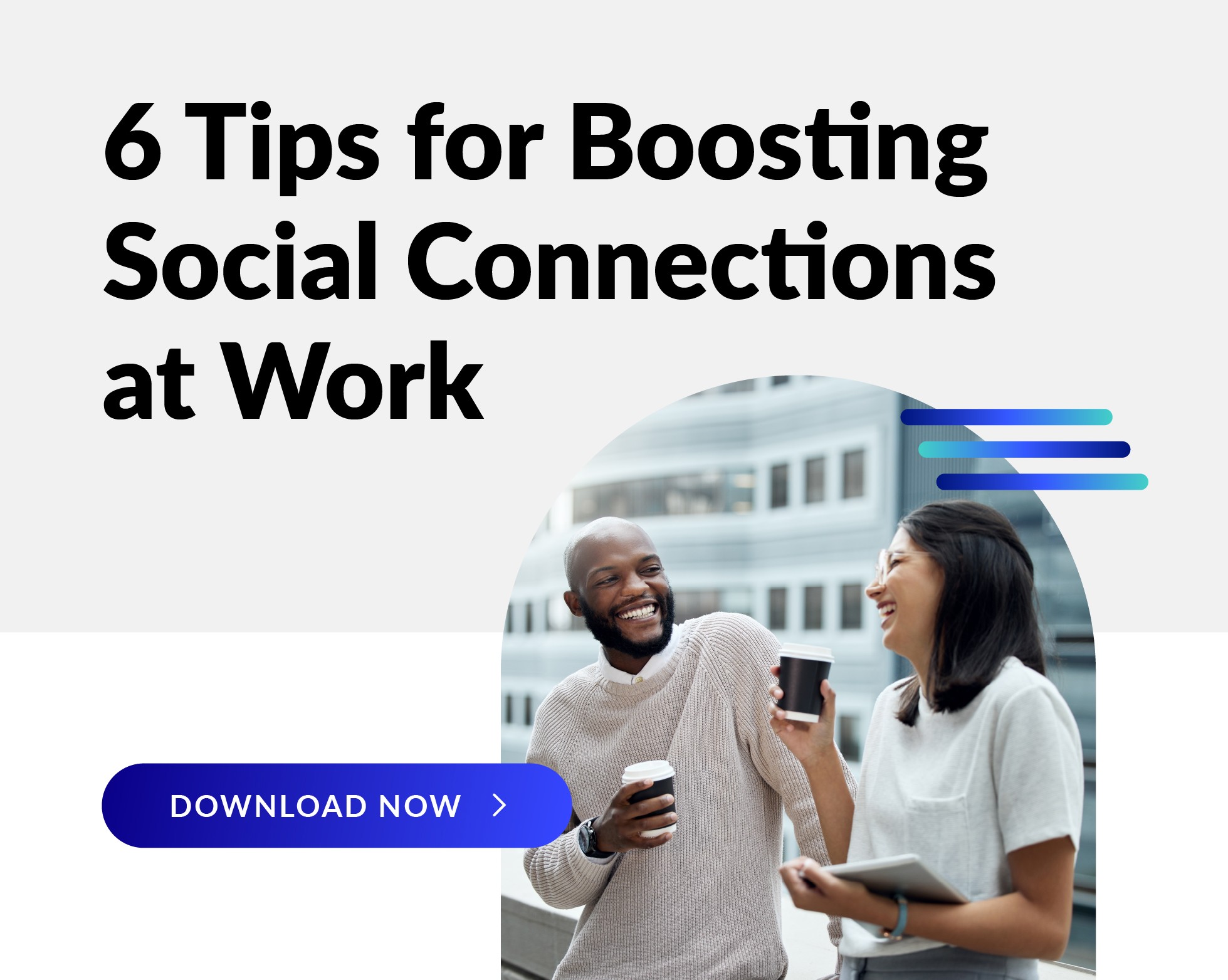 The Business Group on Health recently released two studies that shed light on how employers intend to shape their well-being programs, as well as what employees would like to see in their workplace well-being offerings. While the studies themselves were conducted prior to the pandemic, the insights they reveal are perhaps even more important as we consider how our public health crisis will impact employee physical and emotional wellness over the next year.
The Business Group on Health recently released two studies that shed light on how employers intend to shape their well-being programs, as well as what employees would like to see in their workplace well-being offerings. While the studies themselves were conducted prior to the pandemic, the insights they reveal are perhaps even more important as we consider how our public health crisis will impact employee physical and emotional wellness over the next year.
In January and February of this year, Business Group on Health (BGH) partnered with Fidelity Investments and Alight Solutions to conduct two well-being surveys:
- The BGH/Fidelity study surveyed 152 employers in a variety of industries of different sizes.1
- The BGH/Alight survey canvassed 2,500 employees from a broad sampling of companies.2
Their findings echo some of the same themes from our own employee well-being survey, How Well-Being Programs Are Failing Millennials and Women, conducted in the fall of 2019.
Here are some highlights.
Employee well-being impacts the bottom line.
One of the biggest takeaways from the BGH/Fidelity survey is the growing acknowledgment from large employers that employee well-being affects the bottom line.
- 85% see the connection between the importance of well-being and their overall business strategy.
- 73% view improving engagement as a critical driver of their well-being programs (up from 59% in 2019).
Interestingly, the BGH/Alight study found that employees were three times more likely to be positive about their well-being if they were having a good employee experience. So, it’s clear that focusing on well-being cuts both ways in terms of being healthier and more engaged.
Mental health offerings and employee usage are increasing.
Mental health offerings continue to be a critical component of benefits packages. This is not surprising given the prevalence of mental health concerns today. The National Alliance on Mental Illness (NAMI) estimates that 1 in 5 U.S. adults experience mental illness each year—a number that’s likely to be much higher now, given the circumstances created by the pandemic.
Some revealing statistics:
- 95% of employers reported that emotional or mental health benefits are included in their benefits offerings—the remaining 5% are considering adding them. (BGH/Fidelity)
- 41% of respondents sought mental/emotional health counseling in 2019—up 16 points from the previous year. (BGH/Alight)
- 75% report that they would use phone virtual or online visits with mental health professionals—an increase of 19 points versus last year. (BGH/Alight)
- The availability of teletherapy increased by 50% from 2019 to 2020. (BGH/Fidelity)
The studies also showed significant interest in employees using the following services offered by their employer through a third party:
- Stress management programs
- Emotional/mental health apps
- Onsite mindfulness/meditation
- Onsite services with a mental health professional
WebMD Health Services has kept pace with the desire for more mental health offerings. We recently partnered with Beyond Well Solutions to give WebMD ONE participants access to an on-demand library of private, custom podcasts on a range of mental health topics. Read more on Beyond Well Solutions here.
Financial wellness continues to weigh on employees.
Respondents noted financial concerns as a significant stressor in their lives. In fact, when BGH/Alight asked about their top five well-being priorities, “reducing current debt” and “not living beyond my means or staying within a budget” ranked two and three on the list.
Financial concerns differ by generation, as noted by our study as well. In the BGH/Alight study, Gen Z, Emerging Millennials, Established Millennials, and Gen Xers ranked “reducing current debt” as their top overall well-being priority—outweighing any physical concerns like eating healthy or reducing or managing stress.
We were struck by the BGH/Alight finding that 42% of respondents strongly agree or agree with the statement: “My level of debt is ruining the quality of my life.”
- 84% percent of respondents reported having non-mortgage debt (up from 73% in 2017).
- 29% have student loan debt (up 3 points from 2017).
- Not surprisingly, Gen Zers and millennials have the most student loan debt (39%) and indicate that it prevents them from saving for the future.
WebMD is responding to the increased demand for financial wellness resources for its own users through our partnership with iGrad’s EnrichTM program, which provides access to resources to improve financial wellness.
Stress, burnout, and sleep: A trifecta of worries.
The BGH/Alight study explored the issues of stress, burnout, and sleep as they affect employee well-being. The study found that:
- 20% of Gen Zers and 25% of Emerging Millennials report high levels of stress, versus 16% of Established Millennials and 13% of Gen Xers.
- 43% of those surveyed were experiencing symptoms of burnout, such as physical or emotional exhaustion, a sense of futility, or intense anxiety toward work.
- 48% of millennials felt that sleep quality significantly impacted their ability to contribute fully day-to-day … and 78% of all employees would value employer-provided sleep improvement programs.
These findings corroborate our 2019 study, which found that women and millennials experience higher stress levels and feelings of loneliness than men and members of other generations. The BGH/Alight study found that 69% of respondents would use a workplace stress management program to build resilience. Our study similarly found that millennials, in particular, are more apt to take advantage of workplace stress management offerings.
Some good news about social connectedness.
When asked how they feel about their social wellness, the BGH/Alight study showed a 10-point improvement, with 45% responding they felt good about their social well-being versus 35% in 2018.
The BGH/Alight study also found that 22% of workers often feel lonely or isolated. This is in contrast with our study last fall, in which 56% of women and 44% of men said they “sometimes or always feel lonely or isolated.” It will be interesting to see how the pandemic and its social distancing and working from home aspects affect feelings of loneliness in the next year.
As we discussed in our WebMD study, creating more opportunities to socialize at work, especially through a common purpose like volunteering, is one way to combat loneliness and increase social connectedness. The BGH/Alight study corroborated these findings, with 68% of employers surveyed responding that they offer—or are considering offering—PTO to allow employees to volunteer.
The prevalence of incentives.
Using incentives to drive participation in well-being programs is still prominent, but trending downward.
- The BGH/Fidelity survey found that 78% of employers offer financial incentives for employees, down from 82% the prior year.
- The same study also found that the majority of incentives are still awarded for traditional physical wellness initiatives, like completing Health Assessments or biometric screenings. However, the BGH/Fidelity study noted that 49% of employers offered incentives for participating in a sleep improvement program.
- Companies awarded just 9% of incentives for emotional wellness and 6% for financial wellness, which might be an area for change given the increased focus on mental and financial health today.
Although incentives are an important piece to motivating people to get or stay engaged, you don’t want your well-being program to rely on incentives alone. If your program is personalized to help each individual and adds true value to their life, it should be engaging enough to drive real behavior change without incentives tied to every activity. Learn more about how incentives can support your well-being program in our e-book, 7 Steps to Smart Incentive Design.
As our own study and the two BGH studies show, mental health and financial wellness have become more mainstream, critical components of employers’ well-being strategies. Most employers now acknowledge that these issues can affect both employee productivity and engagement. Thankfully, the stigma of attending to these needs in the workplace is starting to diminish—and workers are increasingly eager to take advantage of them. No doubt, the pandemic will increase the need for employers to focus on these issues even more.
Related Content:
- Whitepaper: How Well-Being Programs Are Failing Women and Millennials
- Blog: Supporting Mental Well-Being in This Moment
- Blog: Financial Wellness Programs – No Longer Just a “Nice to Have”
- Blog: Checking Up on Women’s Well-Being
- Blog: Finding Ways to Volunteer During the Pandemic

